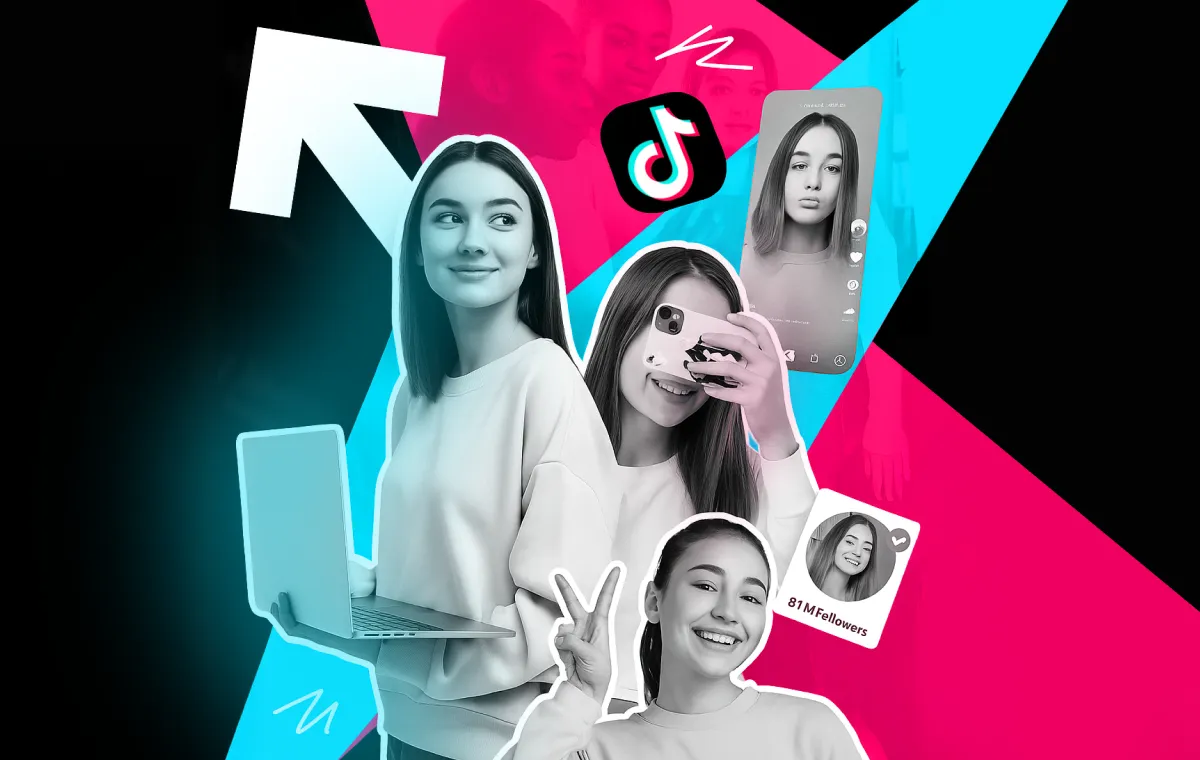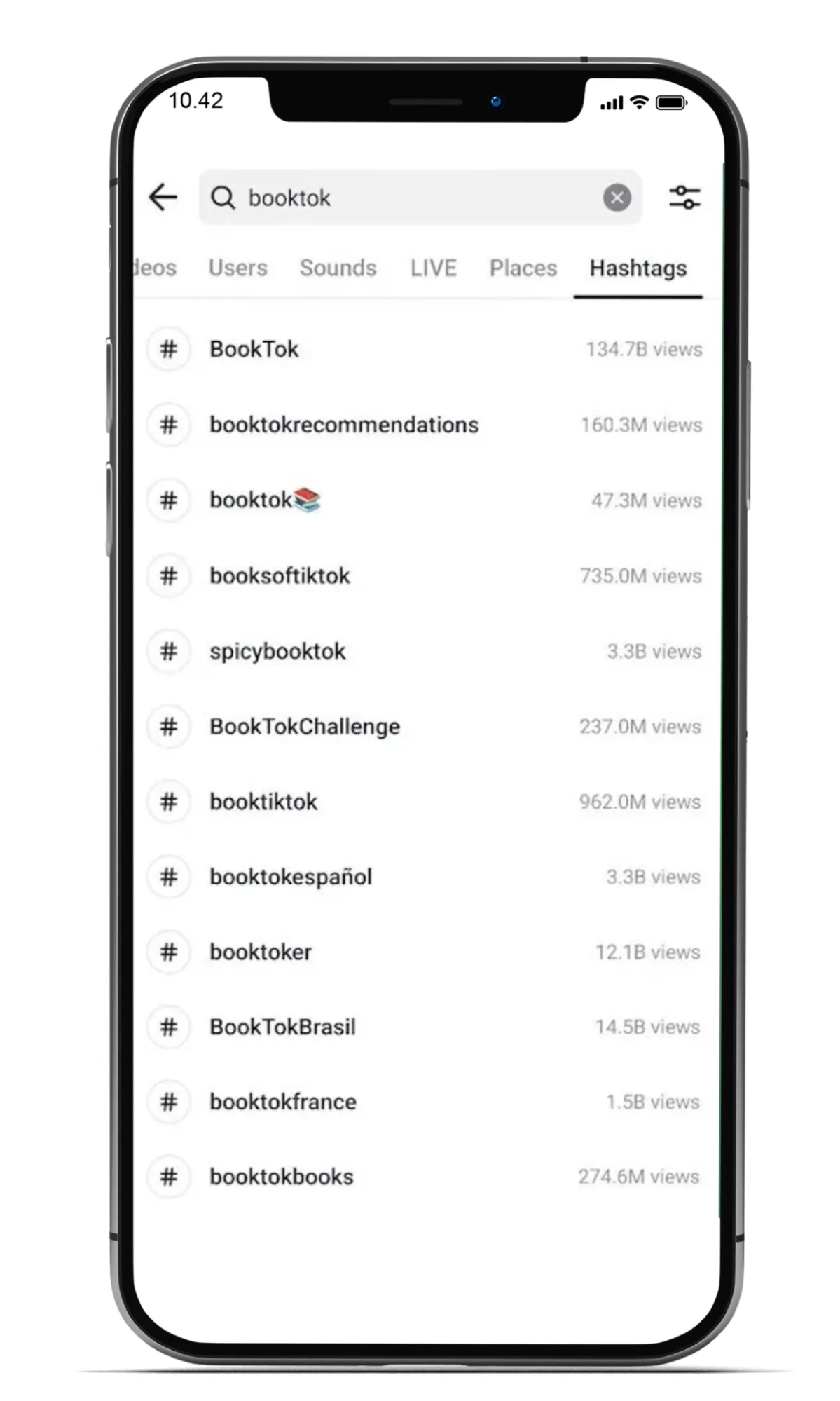TikTok influencers are the reason behind many of the trends we see online—and in real life, too. They help brands go viral, boost product sales, and sometimes even turn a small business into a well-known name. Their content doesn’t feel like an ad, and that’s precisely why it works.
Most brands know it works, but they’re unsure how to begin.
Finding creators can feel like a lot of work. Figuring out what to offer them or how to track results can be confusing. And because of that, many businesses don’t even start.
This guide simplifies the whole process. We’ll walk you through everything you need to know so you feel more confident about working with TikTok influencers.
But before that, let’s start with the basics.
What is TikTok Influencer Marketing?
TikTok influencer marketing is when brands work with well-known creators on the platform to promote their products or services through short, engaging videos.
Instead of traditional ads, the promotion is built into the creator’s usual content, like a day-in-the-life vlog, a product demo, or a quick how-to. It’s one of the easiest ways to get your brand noticed, build trust, and help more people buy from you. If you’re starting out with TikTok as a brand, understanding how to use TikTok for business can help you build a strong foundation before diving further.
Which leads us to the next part…
How Can You Find the Right TikTok Influencer for Your Brand?
Working with the right TikTok influencer can turn a brand from unknown to trending in days, but choosing the wrong one can mean a wasted budget and minimal impact.
Here’s how you can make the right choice for influencer marketing on TikTok.
1. Define What You Want from the Collaboration
Before searching for influencers, get clear on what you expect. Are you looking for brand awareness, website traffic, or conversions? The type of influencer you need depends on your goal.
- If you want more visibility or grow your followers, working with multiple micro-influencers (10K–100K followers) can get your brand in front of highly engaged communities.
- If conversions are your priority, look for influencers whose audience actively engages with their recommendations. Check their past sponsored content – do people comment about purchasing the product?
- If you’re building your brand’s TikTok profile, partner with influencers who can create content that fits your brand’s tone.
A vague goal like “we want to work with influencers” won’t bring results. The clearer your objectives, the easier it is to find the right creator.
Hashtags are one of the best ways to discover influencers already discussing topics related to your industry. Instead of looking for influencers randomly, search for trending hashtags in your niche to find creators whose content naturally aligns with your brand.
For example:
- Fashion brands can explore #TikTokFashion, #GRWM (Get Ready With Me), or #OOTD (Outfit of the Day).
- Beauty brands can look at #BeautyTok, #MakeupHacks, or #SkinTok.
- Tech brands can check out #TechTok, #GadgetReviews, or #SetupTour.
You can find influencers whose content style matches your brand by analyzing the top-performing videos under these hashtags.
To do this:
- Use TikTok’s search bar to explore hashtags related to your industry.
- Scroll through the top-performing videos under each hashtag and check which creators consistently get engagement.
- Look at the comment sections—are people genuinely interacting with the content, or are they just dropping random emojis?
Keeping up with TikTok hashtags can boost your reach, but tracking them manually takes effort. SocialPilot makes it easier by giving you a clear view of your hashtags’ performance.
Beyond hashtag performance, it provides detailed TikTok insights alongside other content metrics of multiple social media platforms. This enables you to monitor and steer your social strategy in the right direction every time.
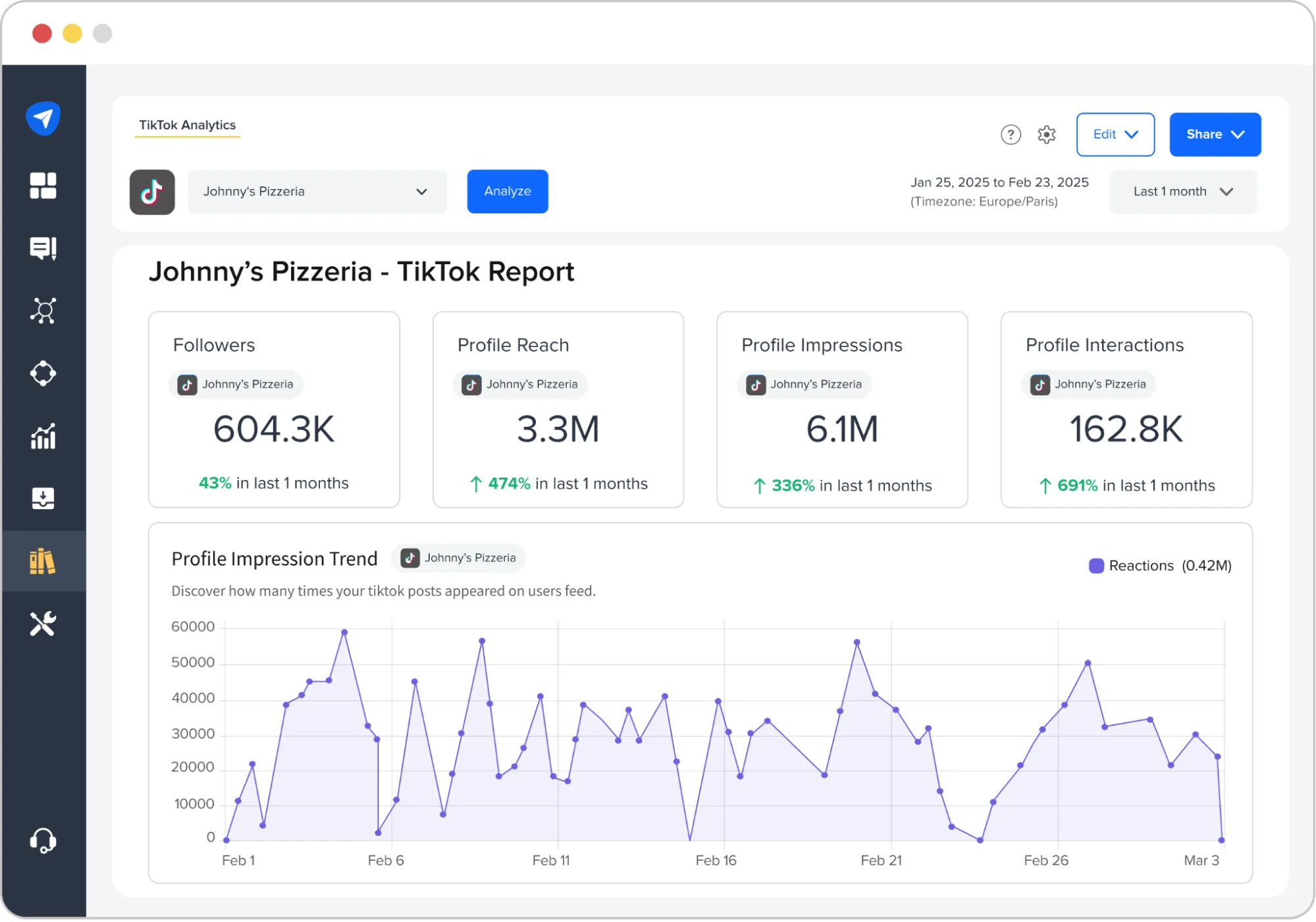
3. Use an Influencer Marketing Tool
Instead of manually searching for influencers, brands can use influencer marketing tools that provide detailed analytics. These tools help filter influencers based on follower count, engagement rate, audience demographics, and previous brand collaborations. Some also flag influencers who have fake followers or unusually low engagement rates.
Some useful tools include:
- TikTok Creator Marketplace: TikTok’s official platform for connecting brands with influencers. It provides insights into an influencer’s audience, engagement rates, and past campaign performance.
- Upfluence: A database of influencers where brands can search based on industry, location, and audience interests.
- Heepsy: A platform that helps find influencers with real engagement and allows brands to filter based on audience demographics.
- HypeAuditor: An analytics tool that helps detect fake followers and evaluates influencer authenticity.
These tools can save time and help businesses avoid influencers with low engagement or untrustworthy metrics.
4. Check their Engagement Rate instead of just Follower Count
A large follower count does not guarantee good results. An influencer with 500,000 followers might have lower engagement than one with 50,000. What matters more is how actively their audience interacts with their content.
A good way to check engagement is by calculating the engagement rate (likes, comments, and shares divided by total followers). On TikTok, engagement rates vary based on follower count. These are average TikTok influencer engagement rates.
- Nano influencers (1K–10K followers): 142.69% engagement rate
- Micro influencers (10K–100K followers): 8.38% engagement rate
- Mid-tier influencers (100K–500K followers): 6.43% engagement rate
- Macro and Mega influencers (500K+): 4.56% engagement rate
You can use tools like HypeAuditor and Modash to check the engagement rate of any profile on Tiktok. If an influencer has a low engagement rate, their audience may not be active, or they may have a large number of fake followers. A creator with strong engagement will likely bring better results.
5. Study Competitor Collaborations
One of the best ways to find influencers is to see who your competitors are working with. If an influencer has already promoted a similar product, their audience is likely a good fit for your brand.
Look at:
- Sponsored posts on TikTok from brands in your industry.
- The comments and engagement—are people genuinely interested, or is it filled with generic responses?
- Whether the influencer has worked with multiple brands in the same niche shows they already have an audience that cares about those products.
Competitor research involves understanding which types of influencers are already driving results in your industry. Dive deeper with our social media competitor analysis guide to learn how to evaluate your competitors’ influencer strategies across platforms.
6 Smart Ways to Collaborate with TikTok Influencers
TikTok gives creators many built-in tools that make influencer campaigns feel more fun and less like ads. Here are a few that help:
1. Duet and Stitch
Creators use Duet to film side-by-side with another video—yours or someone else’s. Stitch lets them clip a moment from a video and add their take. These features work well when you want influencers to respond to product demos, customer reactions, or brand stories. They bring your message into new conversations without starting from scratch.
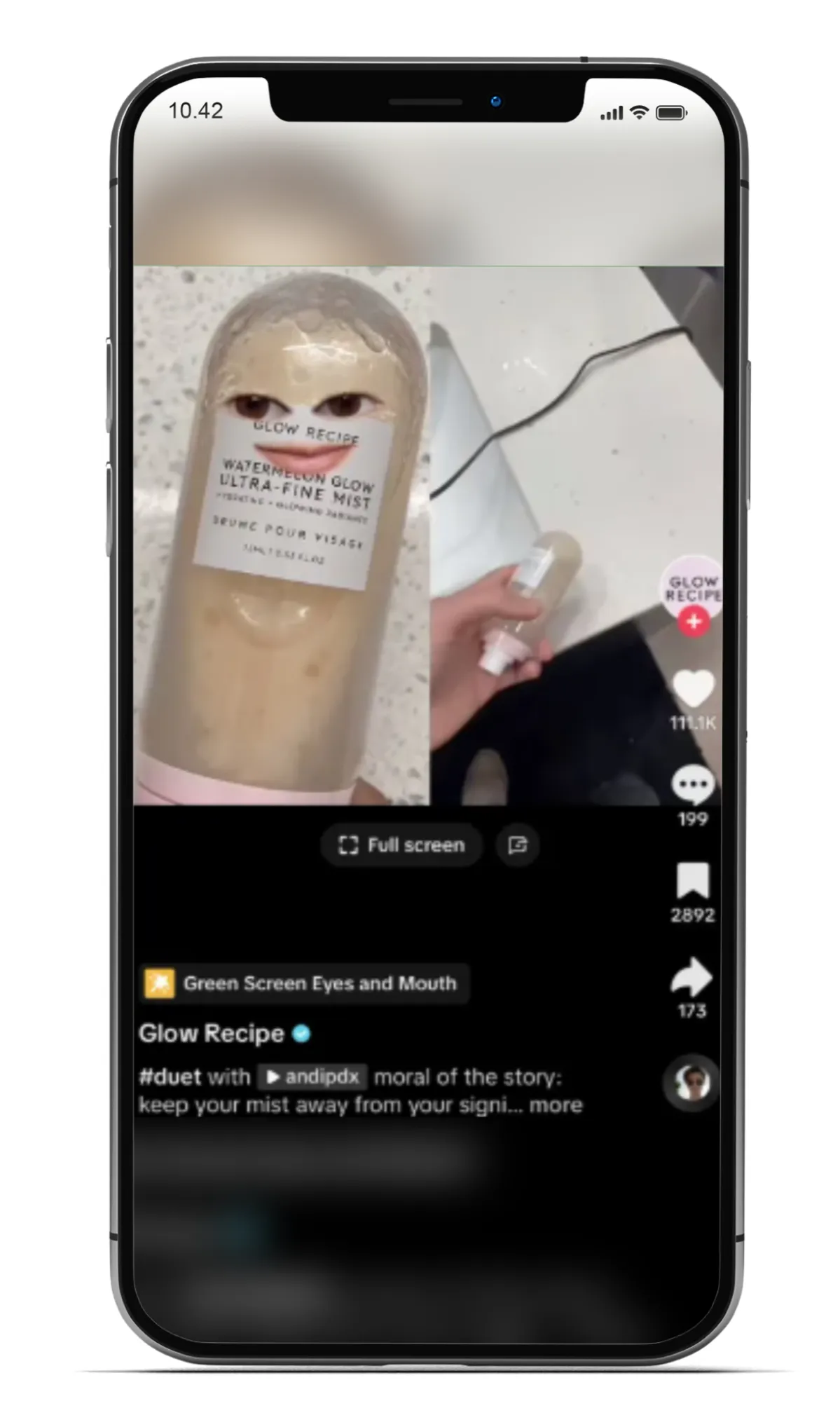
2. Shoppable Links
When a product appears in a video, creators can tag it with a link. Viewers who like what they see can tap and buy without leaving TikTok. This is helpful for impulse buys, especially in beauty, fashion, and lifestyle content, where people often ask, “Where’s that from?”
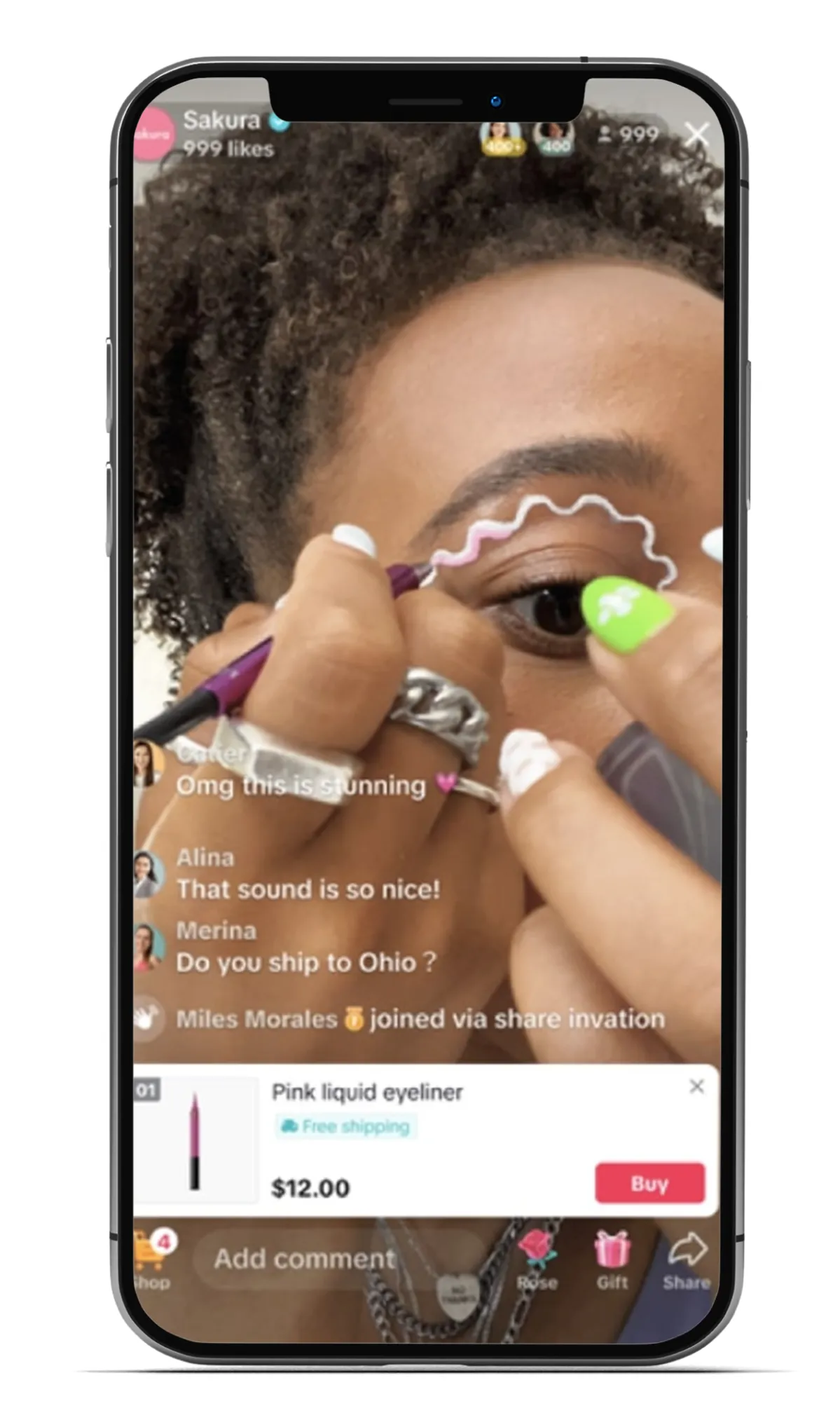
3. Live Shopping Events
If you’ve ever seen someone go live and talk about a product while answering comments in real time, that’s this feature in action. This helps build trust and boost impulse purchases, especially when a limited-time offer is attached. If you’re new to livestreaming, check out our complete guide on how to go live on TikTok to get started smoothly.
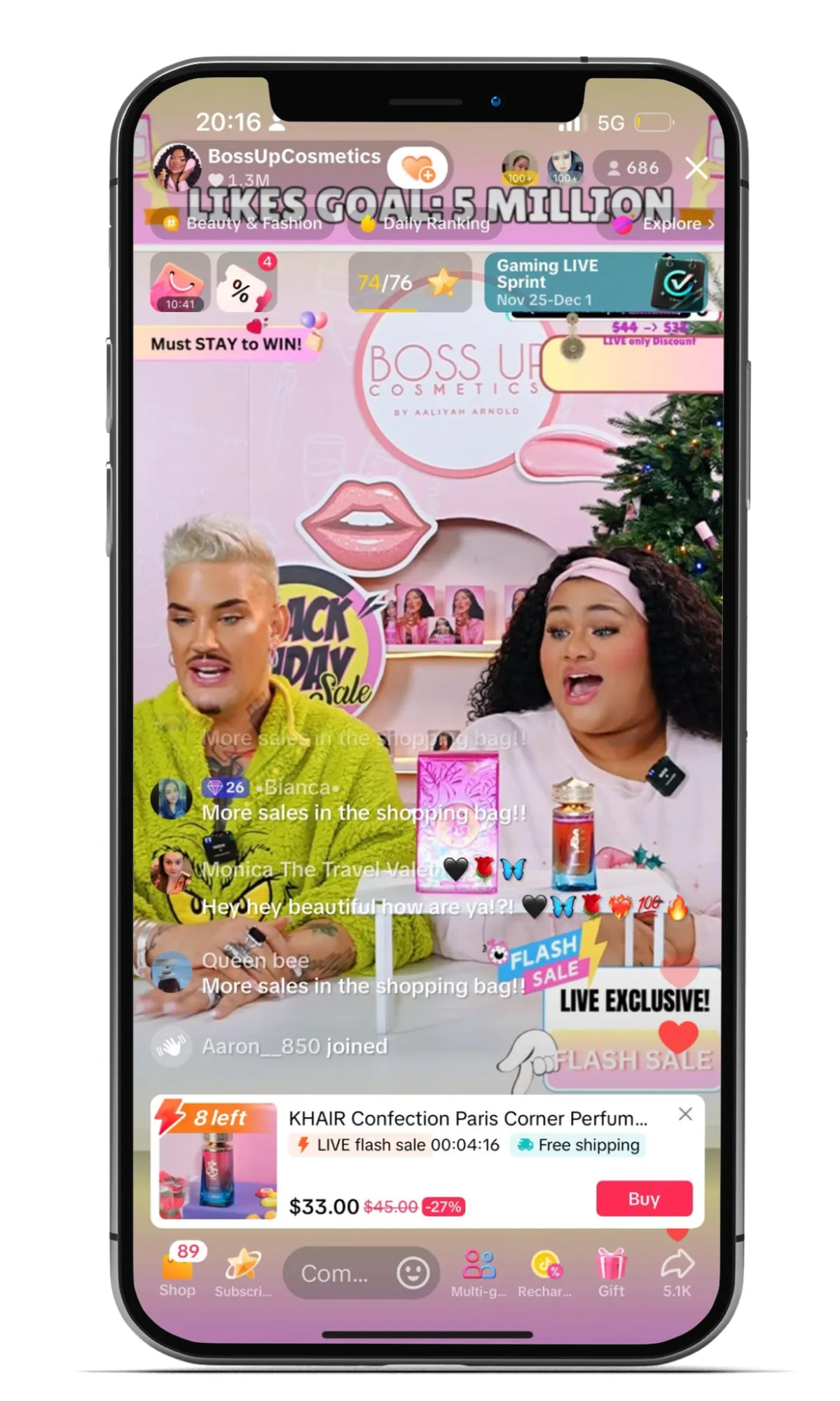
4. Hashtag Challenges
These campaigns ask followers to join in, usually by creating their version of something the influencer started. It spreads faster because people want to be part of the trend. The branded hashtag keeps everything connected, so your campaign grows beyond the original creator’s post.
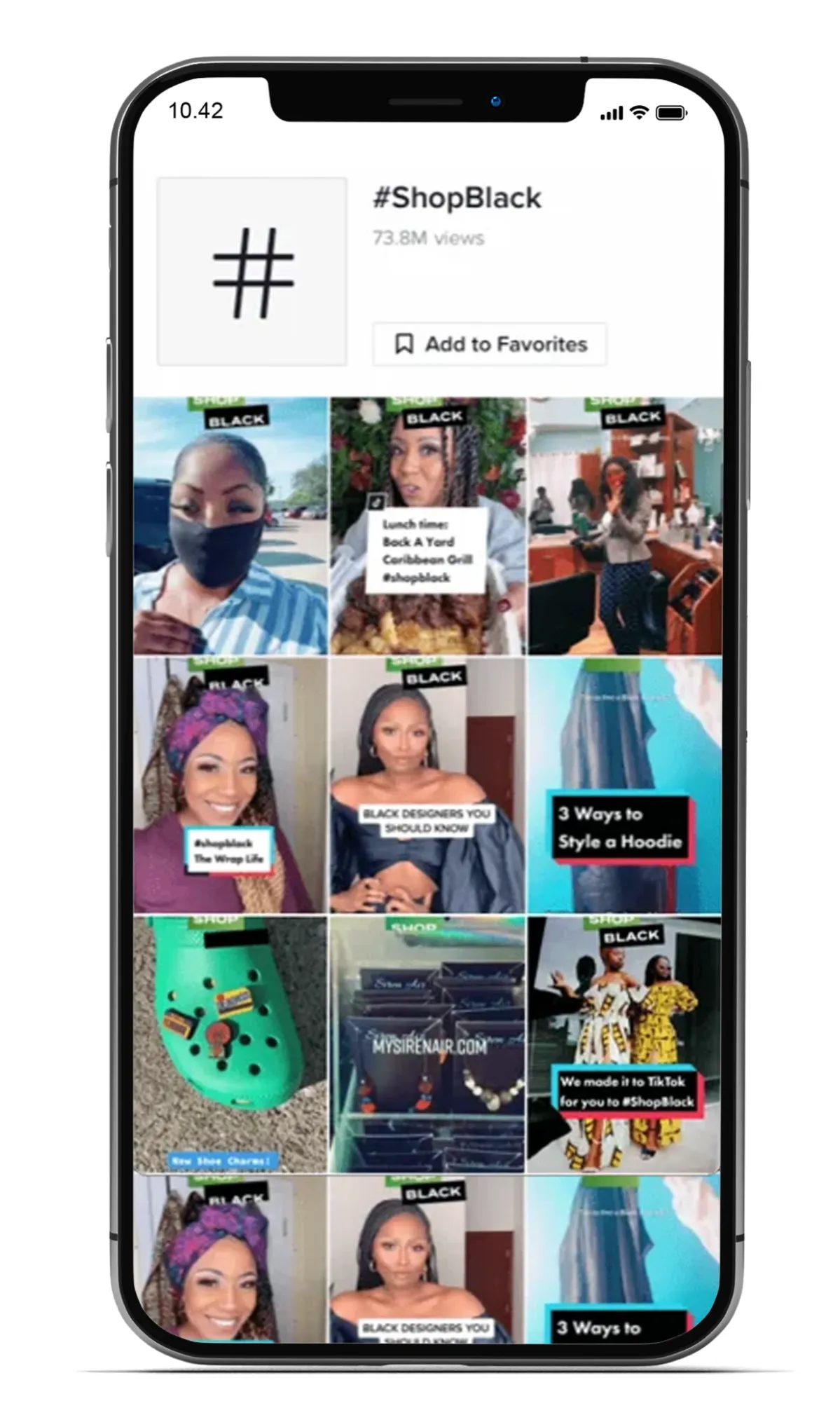
5. Branded Effects
These are visual tools, like filters or animations, related to your brand. When creators use them, your product is linked to a specific look or theme. This makes the content feel playful and keeps your brand visible throughout the video.

6. Q&A Pop-Ups
This lets creators drop common questions from their followers right into the video and answer them in a way that fits their tone. It works incredibly well when a creator is reviewing your product. Instead of flooding the comments with “Where did you get that?”, the answers are right in the content.
You can explore more expert tips from TikTok influencers to see how top creators use these tools effectively and keep their audiences engaged.
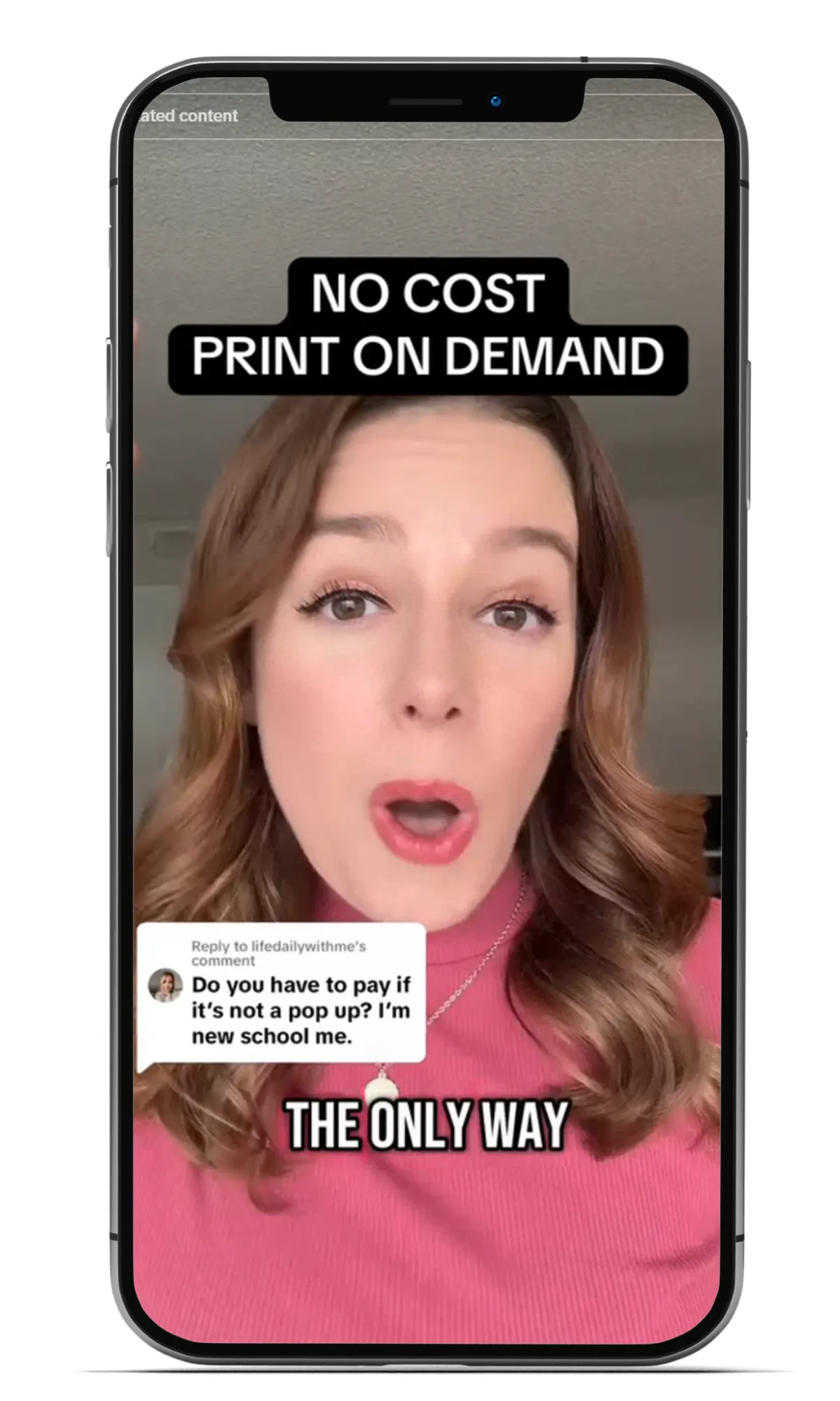
TikTok Influencer Marketing Campaigns(With Results)
1. I Dew Care
I Dew Care, a skincare brand known for its fun and vibrant products, partnered with Kayleigh Bursch (1.2M followers) to bring more attention to its products.
Kayleigh, who creates beauty and skincare content, showcased how I Dew Care fits into her daily routine. Instead of just talking about the products, she applied them on camera, showing the texture, absorption, and immediate effects on her skin.
The campaign succeeded because it didn’t feel like a traditional ad. Kayleigh’s content felt natural and aligned with her usual beauty-focused posts. Instead of trying to convince people who may not care about skincare, the brand reached those who were already looking for new products to try.
The video received 1072 likes, 30 comments, and 24 saves.
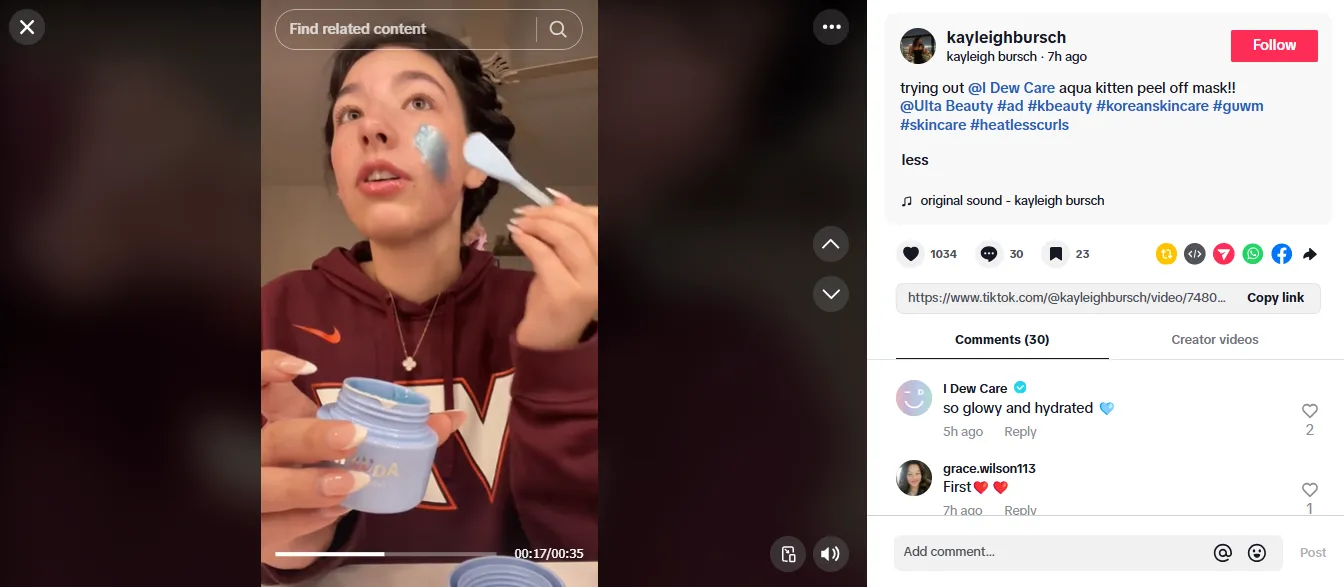
2. Athleta
Athleta, an activewear brand focused on performance and style, partnered with Acquired Style (1.5M followers) to showcase its apparel as part of a daily routine.
In the video, Acquired Style wore a matching Athleta set while sharing her “daily non-negotiables.” It was a casual, relatable way to show how the outfit fit into her everyday routine—stylish enough for the camera, comfortable enough for real life.
What made this campaign work was how naturally it connected fashion and lifestyle. It spoke to people who care about wellness and like wearing activewear that also looks good outside the gym. The video even asked followers to share their routines, which sparked real conversations in the comments.
The post got 3,856 likes and plenty of compliments on the outfit. Athleta joined the conversation too, which helped boost the post’s reach and made the brand feel more approachable.
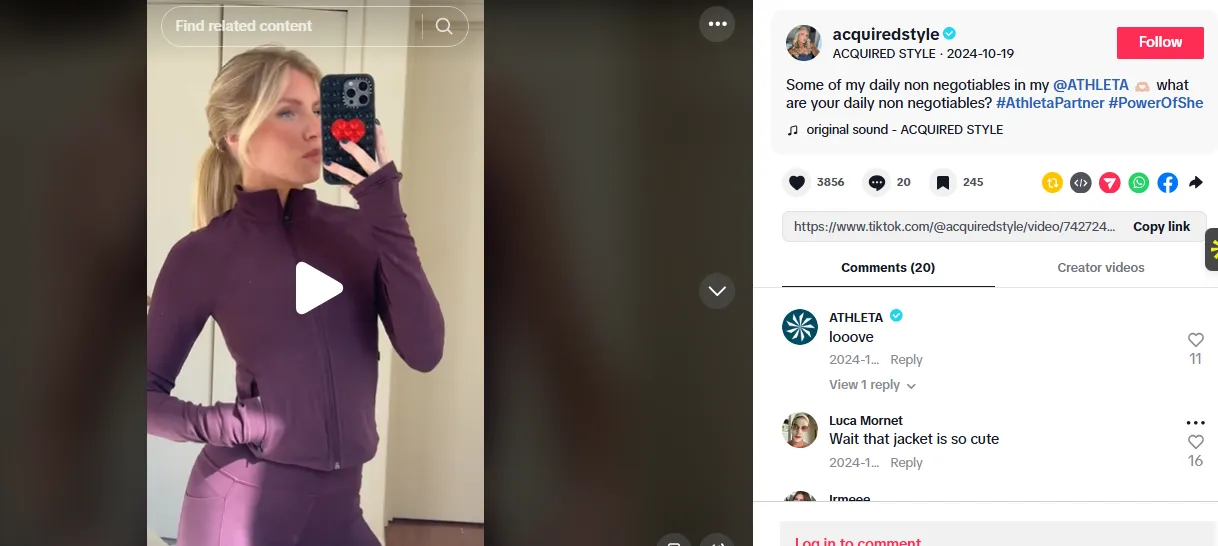
3. Drink Poppi
Poppi, a prebiotic soda brand known for its refreshing flavors and gut-friendly benefits, collaborated with Molly Walding (10.8K followers) to create an unboxing video that feels effortless yet engaging.
In this video, Molly wears a comfy pink lounge set and reacts with genuine excitement, like she’s talking to friends.
It’s a good example of how unboxing videos can draw people in. There’s a bit of a surprise; the packaging looks premium, and her enthusiasm makes the product more interesting. She also included hashtags like #poppipartner and #sodasback, which helped the video reach the right crowd.
The post got 564 likes and several comments, showing how simple, honest content can work well. For brands that want to lean into lifestyle-focused marketing, this example shows what happens when a creator and product match naturally.
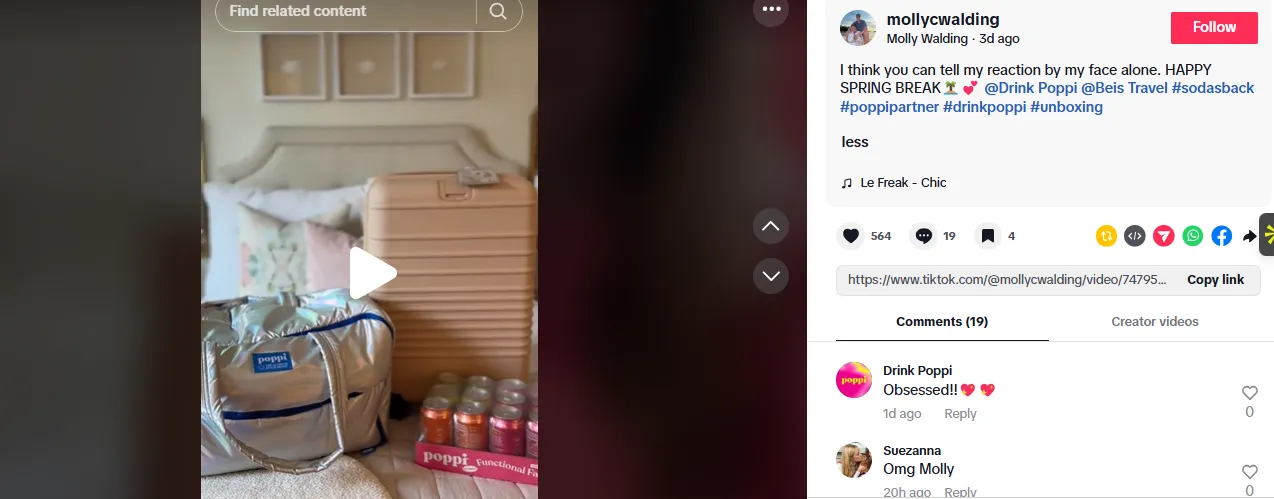
4. Vessi
Vessi, a footwear brand known for its waterproof and lightweight sneakers, collaborated with JaylinJames (2.9M followers) to create a video that proves its shoes do exactly what they claim.
In the video, Jaylin pours water from a fire hydrant directly onto his white Vessi sneakers. Instead of getting soaked, the water slides right off, showing how well the shoes repel moisture. His caption, “waterproof, stylish and light 🏴,” keeps it short and to the point, while hashtags like #VessiPartner and #PuddleHunters connect the post to the brand’s campaign.
This campaign stands out because it delivers proof instead of just making claims. People don’t have to wonder if the shoes are waterproof; they can see it for themselves in a few seconds. The video is quick, visually striking and leaves a lasting impression.
The video received 127.6K likes, 518 comments, and 1,406 shares, showing how much people liked it. A clear demonstration, a well-known creator, and a product that works made this campaign a success.
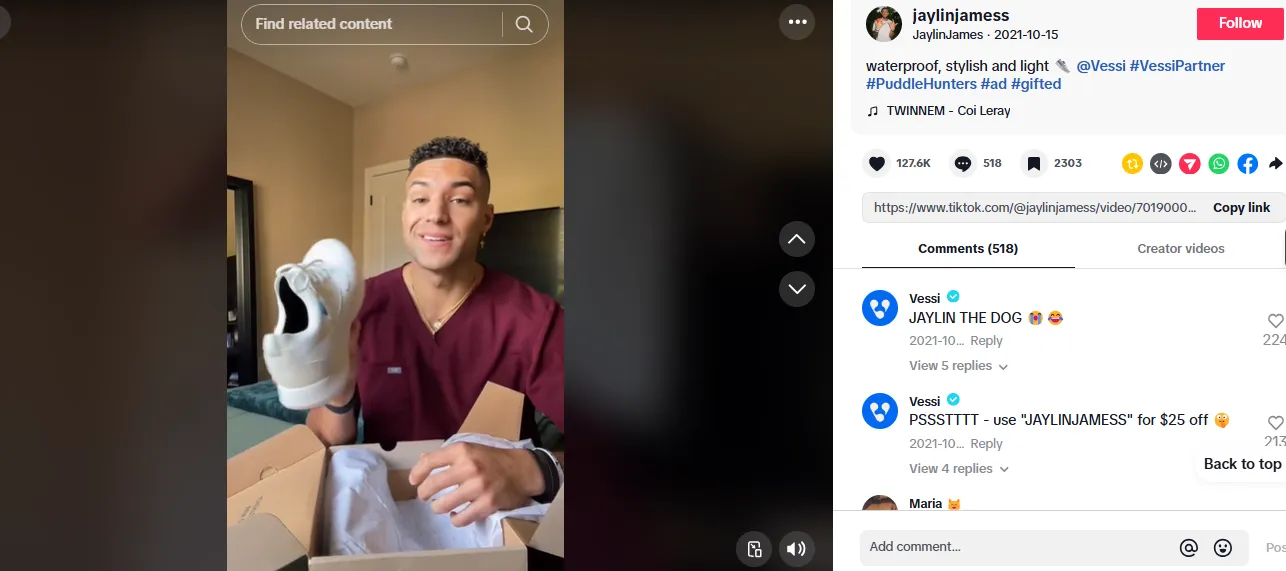
5. Swiffer
Swiffer partnered with thatgirlmel3 (440.4K followers) to showcase its Swiffer Sweeper 2-in-1 in action.
As a content creator who shares tips on lifestyle and home organization, she shows how the product fits into her daily routine. It highlights how cleaning can be quicker and easier, especially in a small space.
The video focuses on how the Swiffer Sweeper 2-in-1 works, without turning it into a sales pitch. Instead of explaining the benefits, she demonstrates them, which makes it easier for viewers to understand why the product is useful.
The video got 10.7K likes, 419 shares, and 34 comments, which shows how helpful, relatable content tends to grab more attention and spark real interaction.
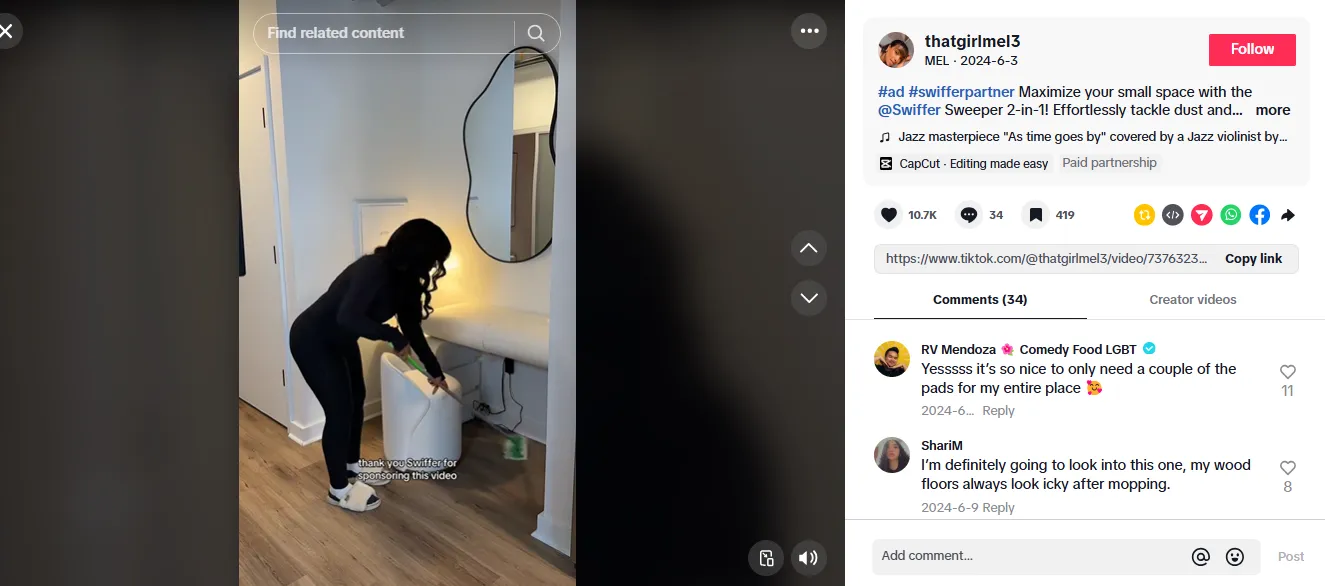
Benefits of TikTok Influencer Marketing
Scrolling through TikTok, you’ve probably come across a product that seemed to be everywhere—mentioned by different creators, used in trends, or casually featured in a daily vlog.
It didn’t feel like a hard sell, yet suddenly, it was on your mind. Yes, and that is the beauty of influencer marketing. Influencer content blends into the feed, unlike traditional ads that people ignore within seconds. It makes product recommendations feel less like promotions and more like discoveries.
But beyond visibility, what does this mean for businesses? Let’s break it down.
1. People Trust Creators More than Brand-Run Accounts
Most TikTok users prefer content that feels real and easy to relate to. That’s why influencer marketing works well. If you’re looking for inspiration, explore these TikTok content ideas that feel relatable and authentic to start building that trust. When a creator shows how they use a product in their routine through tutorials, before-and-after videos, or even casual stories, it’s more engaging than a polished ad.
Brand posts can often feel too scripted or salesy. But when people already follow talks about a product, it comes across as genuine. It’s like hearing a tip from someone you already trust.
Research Gate shows that 92% of consumers trust influencer recommendations over traditional ads.
A brand promoting its own product often meets skepticism, but when someone people already follow and admire vouches for it, the message carries more weight.
One of the biggest advantages of TikTok influencer marketing is how fast content spreads. TikTok’s algorithm pushes engaging videos to a broader audience, even if they don’t follow the creator.
For example, when a single creator, Sophie Hinchliffe, shared their experience with The Pink Stuff, a cleaning product, it quickly became a TikTok sensation. The brand didn’t run a major campaign, yet sales surged simply because influencers made the product look useful and fun.
Small business owners can benefit from influencer-led trends that take off organically instead of relying on paid ads. Plus, your brand can become part of the conversation and let TikTok’s viral nature work in your favor.
3. Long-Term Brand Growth, Not Just One-Time Hype
Paid ads stop showing once the budget runs out. But with TikTok influencer content, the reach doesn’t always end right after the post goes live. If a video performs well, the algorithm can bring it back days or even weeks later.
More than that, working with creators regularly helps people remember your brand. When the same product appears in different videos over time, it starts to feel familiar. When something feels familiar, people are more likely to trust it and eventually buy it.
Take Fenty Beauty, for example. Instead of going all in on one big campaign, they teamed up with many beauty creators over time. This helped the brand stay in the spotlight and build steady momentum. It’s one of the reasons why Fenty became a popular name on TikTok and saw consistent sales.
For brands thinking long-term, this kind of visibility makes influencer marketing worth investing in.
4. Higher Engagement Leads to Lower Customer Acquisition Costs
With traditional digital ads, you need to keep spending to stay visible. And even then, people often scroll past without noticing. Influencer content on TikTok works differently. It’s made to entertain, so people stop, watch, and engage.
According to a study by Shopify, nano-influencers on TikTok have engagement rates of around 18%, while macro-influencers see about 8%. That level of interaction is rare on most other platforms. To improve your strategy, here’s a helpful guide on how to increase TikTok engagement effectively and reach wider audiences organically.
More engagement means more likes, comments, and shares, without needing an extra budget. When people interact through duets, stitches, or trend recreations, the content keeps spreading, giving brands more exposure without paying for every view.
Make Influencer Marketing Work for Your Brand
Finding the right influencers is just the starting point. To see results, brands must track engagement, adjust based on what’s working, and focus on building long-term partnerships instead of quick one-off campaigns.
For a broader understanding of how influencer strategies tie into a full platform strategy, check out this TikTok marketing guide designed for brands of all sizes.
A strong collaboration blends into the creator’s regular content. People can easily tell when something is out of place or overly promotional. That’s why it helps to work with someone who already connects with your brand and enjoys using your product.
Even when things are going well, managing all the moving parts takes time. It can quickly get overwhelming, from scheduling posts to keeping track of collaborations and checking performance. Tools like SocialPilot help by handling scheduling and publishing, so brands can spend more time building relationships and less time figuring out when to post.
